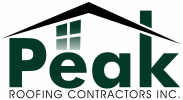We depend on our roofs to keep the weather out of our homes, and with winter setting in even more firmly, roof problems are the last thing you want to be dealing with. Roof damage is not something that you can afford to ignore, however. If you suspect that you might have a roof problem, then you need to go and check to make sure, if only for your peace of mind.
How to inspect your roof
Unless you have experience working on a roof, you shouldn’t go up top to do your inspection. Instead, using a pair of binoculars, go outside and take a walk around your house, checking for problems.
What to look for
Depending on your roof material, look for the following signs that your roof needs work:
Asphalt shingle: Look for missing or torn shingles, as well as shingles that may be loose or are coming loose. Look carefully for signs of rotting, curling, buckling, and blistering in your shingles. Excessive granule loss is another warning sign to heed.
Slate and tile: With slate and tile, look for cracks in the tiles, or actual broken areas, or signs of chipping. Take note of any areas with missing tiles, or where the tiles look to have come loose.
Wooden shake or shingles: Look for areas in the shakes or shingles where the wood has split, as well as signs of rotting in the wood. Look also for patches where the shakes or shingles have come loose, or look to be coming loose.
Other things to check
Flashing: Look for cracks or gaps in the caulking around your roof’s flashing, as well as signs of rust or more serious damage on the flashing itself.
Chimney: Check your chimney for a missing or damaged chimney cap.
Moss and lichen: If you have a lot of moss and lichen on your roof, it’s possible that the roof is rotting underneath. Black algae spots, while unsightly, are more of a cosmetic problem.
Signs of water penetration
Short of an actual leak, look for dark areas or patches on the ceilings, peeling paint, damp spots along fireplaces, and water stains on pipes venting the furnace or heater. If any of these are present, water has entered your home and you have a leak in the making.
So you’ve gone and checked your roof for problems. What, exactly, are these signs telling you? Find out in Part II.
